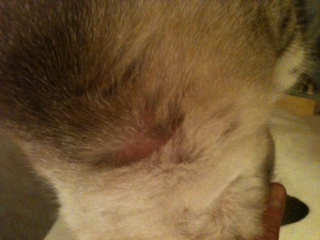Treating Fleas on my Indoor Cat
My 5 yr old cat and her "sister" both have more fleas this summer than ever before. I was alarmed at the amount and the small open circles from her biting, so I took them both to the vet. Since she had a previous condition that occurred from a flea bite, I went into panic mode. Last time she had fleas she developed a reaction which caused a dramatic loss in weight and we almost lost her.
The vet said the fleas were irritating her and she was uncomfortable and the sores were infected. The other cat had no open sores. Both were given a 5 hr release tablet to kill any fleas on them. I was sent home with both cats. The "sister" was not given any meds, just an advantage type product to apply. The other was given a 2 week supply of antibiotic tablets and a liquid medication. I gave this to her twice daily. The itching subsided. The following week we had the house treated. I was told by the vet not to bathe the cats.
The "sister" cat has fleas again and is constantly itching. The other has lines where her hair has fallen out and the skin is very red. No blood, just looks very irritated. She itches constantly. Her tailbone and lower back hair is falling out and growing back rough. She also has the missing hair underneath her chin.
I have applied a topical over the counter Neosporin of sort, for humans. Both on areas she can not lick.
Should I take her to the vet tomorrow? I mean I don't want her to miserable but it was $300 last time.
Please advise fellow cat lovers on a budget .
Thanks!!!
Flea Treatment Suggestion From Our Veterinarian
In cats, flea infestations are caused by a specie of flea called, ‘C Felis’ or ‘cat flea’. This specie is capable of causing severe irritation not only in animals but also humans. The condition is called “Flea Allergy Dermatitis’ or FAD.
In order to treat allergy dermatitis caused by fleas, there are several steps involved which includes treatment of the fleas on infested animals, clearing the environment (both adult and larvae of fleas) and a follow up of the
In cases like this one; usually extra care and rapid response is required when two or more cats are being handled. It becomes difficult to clear fleas, even if you fully treat your cats and surroundings. I am afraid, even after all the effort of treatment and clearance, cats may be still infested with fleas.
The one administered with antibiotics and now showing signs of itchiness and falling out hair along with hyper-pigmentation of skin in areas you mentioned are not actual bites of fleas but is the manifestation of an allergic reaction. While for the ‘sister’ cat, it may be onset of a flea infestation which may lead to severe allergic reactions and secondary bacterial infection.
The problems for pet owners, dealing with flea control is that there are often too many to handle. Usually, it is considered that available flea products may kill or repel fleas within hours of application, but it is not true. Repellency in most of cases is non-existent and fleas may live for days before being killed. Thus, a flea infestation may persist for several weeks (usually 8 – 10 weeks) before full elimination.
Along with that, the real problem is that of the environment. Even if you treat indoors, feral cats, infestation in yards, or other infested pets, fleas still remain a problem to deal with. Pet owners may treat their pets but they remain susceptible to becoming infested.
For now, I’d suggest that you take your cats back to veterinarian for a follow up checkup and I think, it should not cost as much as it did last time, since, you’d be dealing with residual infestation. Depending on the symptoms of any allergic reaction, the vet may prescribe medications such as antibiotics and anti-allergic drugs. Along with follow up examination and continued treatment, it is recommended that you keep your pets in a controlled indoor environmentand wash all belongings like pet blankets, containers etc. frequently and vacuum sleeping and resting areas as many times as possible. Consider using a product in the home designed to kill fleas on carpets and wood floors such as FleaBusters RX.
Join in and write your own page! It's easy to do. How? Simply click here to return to Cat Skin.

